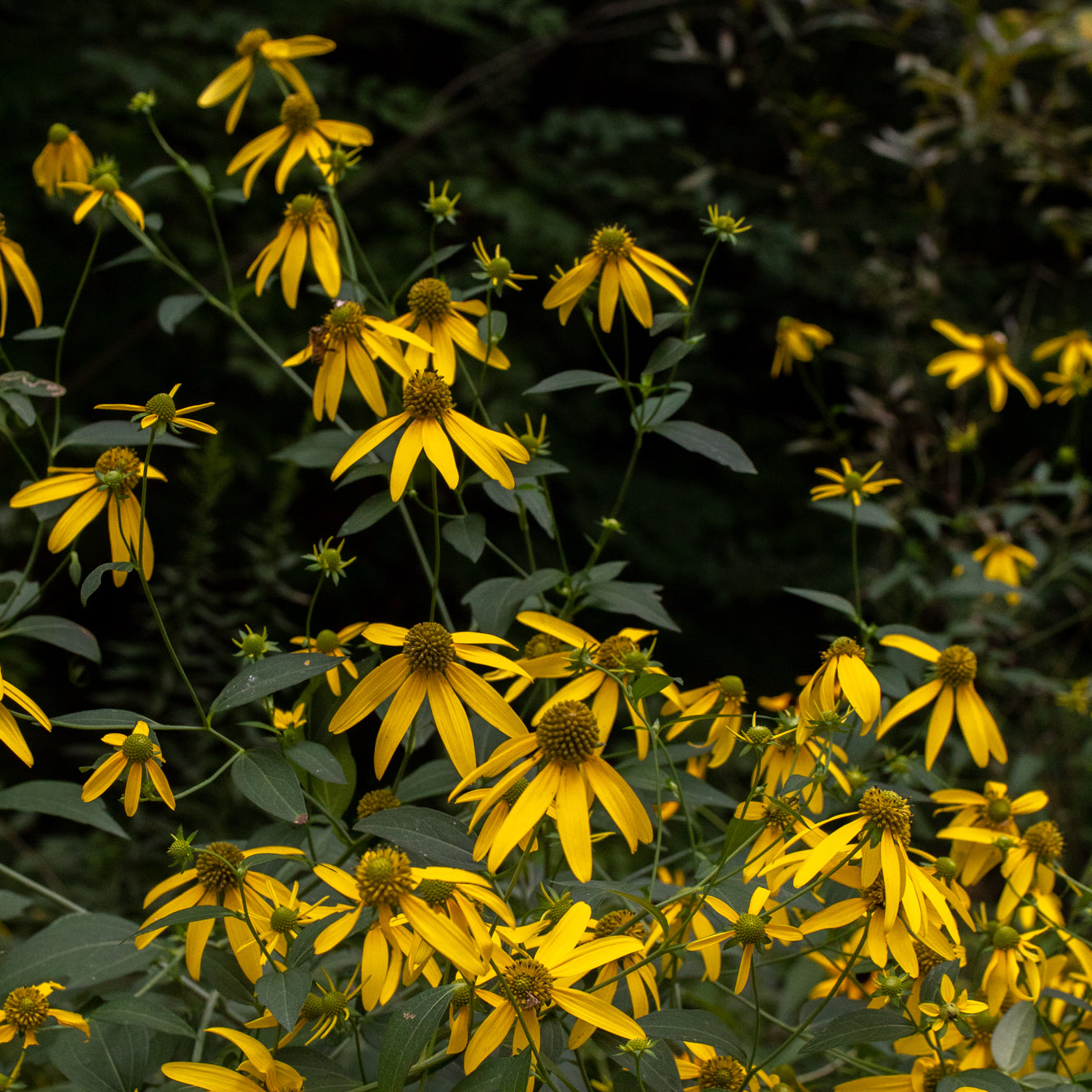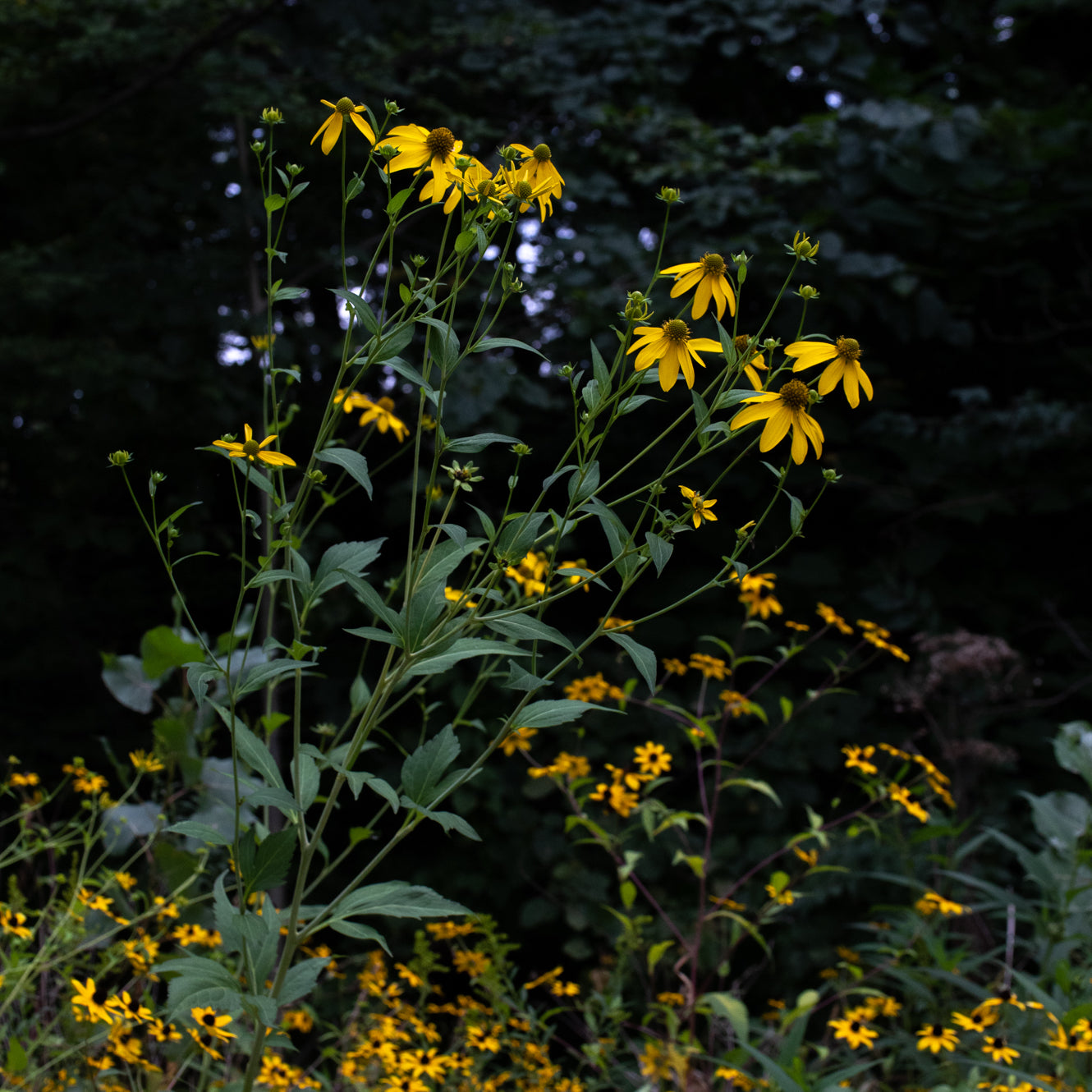Cut-leaved coneflower
Rudbeckia laciniata
Rudbeckia laciniata
Couldn't load pickup availability
Sun/shade: Full sun to full shade
Soil moisture: Medium to wet
Height: 4-6'
Flowering period: August
Deer resistance: Medium
Along the wooded riverbank, a yellow wildflower rises above the nettles and looks out across the flowing stream. Tall, showy wildflowers typically reside in the field rather than the forest, but cutleaf coneflower breaks this trend. A resident of open, wet woods and streambanks, cutleaf coneflower makes a stunning centerpiece for a partially shaded garden, especially in places of wet soil. The plant will also perform well in full sunlight as long as the soil isn’t too dry.
Spreading by both seed and rhizome, cutleaf coneflower can be aggressive under ideal growing conditions. In the springtime, sever rhizomes with a shovel and remove unwanted sprouts to control spread. Plants that should compete well with cutleaf coneflower and also complement its light-yellow flowers include ironweed, hollow Joe Pye, and flat-topped aster.
Similar to other Rudbeckia species, black-eyed Susan and brown-eyed Susan, cutleaf coneflower’s petals display ultraviolet coloration invisible to the human eye, but visible to bees. To a bee, the petals are two-toned, like a bullseye indicating the presence of floral rewards. To judge from all the buzzing around the flowers, the bees are pretty good at hitting the mark!
Photos by Ashley Keesling.



